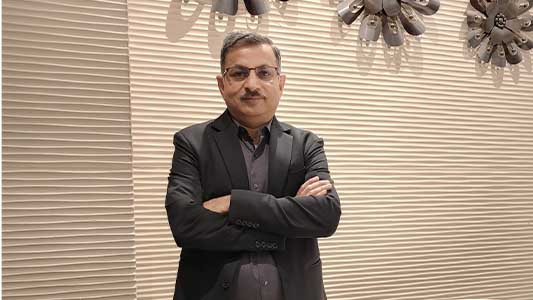Startup success is often celebrated through rapid funding rounds, flashy launches, and sleek tech stacks. But behind the noise, 90% of Indian startups shut down within two years.
The reasons are not always due to market saturation or funding droughts. Often, they boil down to two fundamental issues, that is:
- Building something no one needs. According to CB Insights, 42% of startups fail because there is no market demand for what they created. In other words, they build first, ask questions later, if at all. Let us call this a Technologist Trap.
- 23 % of failed companies in CB Insights’ 110-post-mortem sample cite “Not the right team” as a primary cause, right behind “no market need” and “ran out of cash”. Unable to build a Good product cross-functional team to deliver on the vision, so that the Product gets made with the right functional design and tech stack and team. Let us call this a “First-time” Founder trap.
Let us take a closer look at where this problem originates.
The Technologist Trap: Great Code, Wrong Problem
A common thread in India’s startup ecosystem is the dominance of technology-led founding teams. These technologist-founders are brilliant software developers. They can write clean code, build scalable backends, and integrate AI modules in record time.
But here is the problem: they often do all this before talking to a different set of customers.
Their focus is on Tech execution, not Product validation. The result is well-architected solutions to the problems that probably do not exist at all.
“Being able to develop an app is not the same as building a business.”
This overemphasis on capability over context leads to beautifully built products that fail to deliver value, because no one needed them in the first place.
The “First Time Founder” Dilemma: Great Vision, Muddled Execution
Domain-expert first-time founders often enter the arena with razor-sharp industry insight, a compelling mission, and unshakeable conviction about the problem they want to solve. Yet the very strength of that focus can mask a critical weakness: an underdeveloped ability to assemble the right mix of cross-functional teams that turns vision into a working product.
Lacking seasoned counterparts in product, engineering, and agile delivery, these founders struggle to translate domain wisdom into iterative roadmaps, make sound build-vs-buy calls, and make architectural decisions. The result is a product that echoes real pain points yet drifts away from user behaviour, agile feedback loops, and finds difficulty in scaling.
Solution For Technologist-Founders
Being a builder is a superpower—until it blinds you to whether anyone truly needs what you are building. Here is a tighter playbook for turning raw engineering drive into rapid market learning:
- Define Risky assumptions, Build it in the product
- “Teachers will only use our lesson planner if it saves them at least 10 minutes per class.”.
- Build only enough code—or even a clickable mock—to test that assumption in days, not weeks.
- Instrument for Feedback, Not Polish
- Replace extra features with quick surveys, or do a FIGMA check with prospective buyers, “Was this useful?”
- The feedback stack (metrics + interviews) matters more than the tech stack at this stage.
- Pressure-Test with Real-World Constraints Early
- Smart-classroom lesson: high-spec digital boards and AI tools looked brilliant in pitch decks, but failed in overcrowded, low-power government schools. A half-day field test would have surfaced the infrastructure gap long before the full build.
- Smart-classroom lesson: high-spec digital boards and AI tools looked brilliant in pitch decks, but failed in overcrowded, low-power government schools. A half-day field test would have surfaced the infrastructure gap long before the full build.
- Recruit Product Thinkers—Fractionally Is Fine
- A part-time product mentor or advisor can slash wasted cycles by challenging roadmaps, defining success criteria, and reminding the team that “done” means “validated,” not “perfect.”
- Pair them with engineering sprints so each iteration ends in a user-observable outcome.
- Iterate in Learning Loops, Not Feature Blocks
- Release → observe → refine. Treat every deployment as an experiment that must return a specific learning outcome (“Did daily active use rise 20 %?”).
- Celebrate invalidated assumptions; they’re cheap course corrections, not setbacks.
Solution For “First Time” Founders
Industry insight is a fierce advantage—but only when it rides on a solid product-building engine combined with company-building capabilities. Here is a tighter, step-by-step way to turn deep domain knowledge into a market-ready solution:
- Build a Minimum ‘Tech & Process’ Vocabulary—Fast, Learn the language of software delivery:
- agile cadences, backlog hygiene, common tech stacks, and the trade-offs that shape architecture (performance, security, extensibility).
- Meet the founders and teams of 3-4 software companies to understand the nitty-gritties involved in the software development.
- Secure a Cross-Functional Core Team Early, Anchor yourself with two key counterparts
- Senior Technologist / Architect – translates vision into a scalable system and pre-empts future rewrites.
- Agile Product Strategist – converts domain insight into iterative, testable roadmaps and keeps the team shipping.
Together, they form the bridge between “industry pain point” and “deployable feature.” - Treat UX, QA, and Observability as First-Class Citizens
- User experience, design systems, automated testing, and basic monitoring feel optional at the MVP stage—but they compound in value. Bake them in early to avoid the “retrofit tax” just when adoption is ramping.
- Instil Operational Discipline with Lightweight Tooling
- Adopt Jira, Azure DevOps, or an equivalent single source of truth. A transparent board and a clear Definition of Done give everyone, from founders to engineers to investors, a real-time pulse on progress and risk.
Final Word
Both archetypes, tech-first and domain-first, are essential to startup success, but without the bridge of a cohesive, cross-disciplinary team, even the sharpest first-time founder can find their clarity of purpose stalled in execution limbo.













